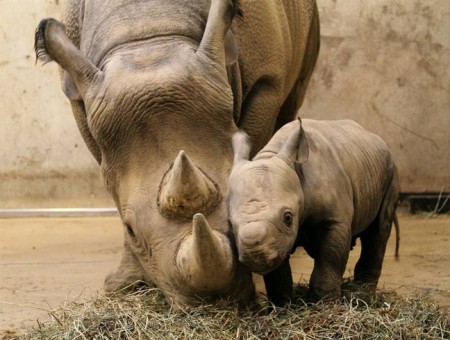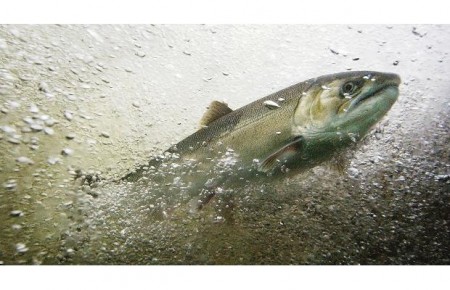October 31, 2015 – Tonight is Halloween and for the last week people have been greeting me with “Happy Halloween.” Hate to be a grinch but when did Halloween turn into anything more than a night for children to go door-to-door shouting “trick or treat?”
Speaking of tricks, two genomics stories caught my eye in the last week. The first featured the endangered African Black Rhinoceros, being hunted to extinction by poachers who cut off the horn and sell it to those who believe when ground up it has medicinal properties (equivalent to Viagra in some cultures). Ground up rhino horn can sell for $66,000 U.S. per kilogram ($30,000 per pound).
The second story featured the endangered Coho Salmon in Western Canada. Since 1989 the Coho Salmon fishery has seen a dramatic decline impacting the lives of aboriginal communities as well as the livelihood of commercial fish operations in British Columbia and the U.S. Pacific Northwest. In 1997 the fishery was closed because salmon populations had so dramatically declined it was feared the species would become extinct.
So what role can genomics play for these two species?
Company Develops Genetically Engineered Rhino Horn Without the Rhino
Pembient, a biotech startup based in Seattle, Washington, has developed a product manufactured in their laboratory that is genetically a match for rhino horn. Using bio fabrication that combines genetically engineered yeast with rhinoceros DNA the company hopes to 3-D print entire rhino horns to satisfy market demand and stop the killing off of African Black Rhinoceros just for the rhino’s peculiar use of keratin (a substance you have in your hair and nails). Of course if this fails the next step is to genetically engineer rhinoceros without horns. This kind of genetic editing to save a wild species, as opposed to improve a domestic animal, would be far beyond current practice. Today genetically modifying domestic animals is highly controversial. Selective breeding remains the accepted norm.
Genome BC and Partners Investing in Coho Salmon Project to Restore Fishery
Over the next four years wild Coho Salmon will be the subject of a project entitled, Enhancing Production in Coho: Culture, Community, Catch. The plan is to use existing and develop new genomic tools to secure a sustainable fishery for Coho Salmon for the foreseeable future. Coho will be studied to document their genetic diversity based on distribution throughout the many rivers and streams that are the birth homes of this species and the places they return to, to mate, lay eggs and die. The knowledge gained will be used to strengthen the species and restore population volumes.
Hatchery-based Coho Salmon have low survival rates. Studies from 1998 to 2007 show that less than 5% of returning fish come from these sources which suggests they are poorly adapted to the marine environment to which they migrate and live most of their lives. Using genomics to identify the traits in the wild Coho Salmon and apply them to improve hatchery stock may prove to be critical to the fishery, able to produce healthy and resilient fish capable of withstanding climate change impacts.
States Dr. Alan Winter, President and CEO of Genome BC, “this project will deliver the genomic resources and tools required for better stock identification, improved fisheries management, a more effective hatchery system, and growth of the nascent land-based Coho salmon aquaculture industry in Canada.”










